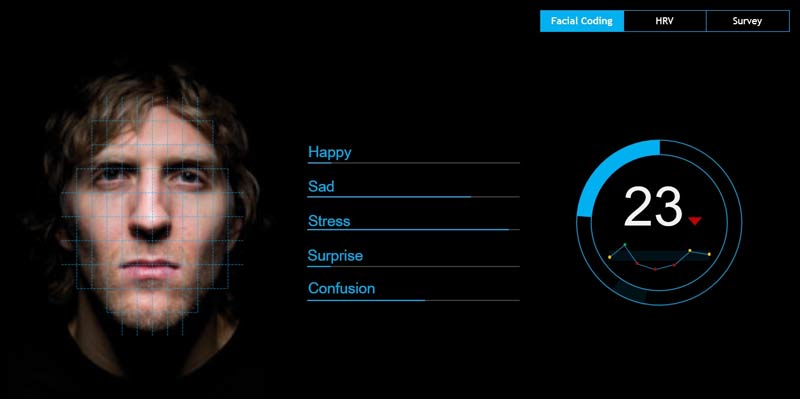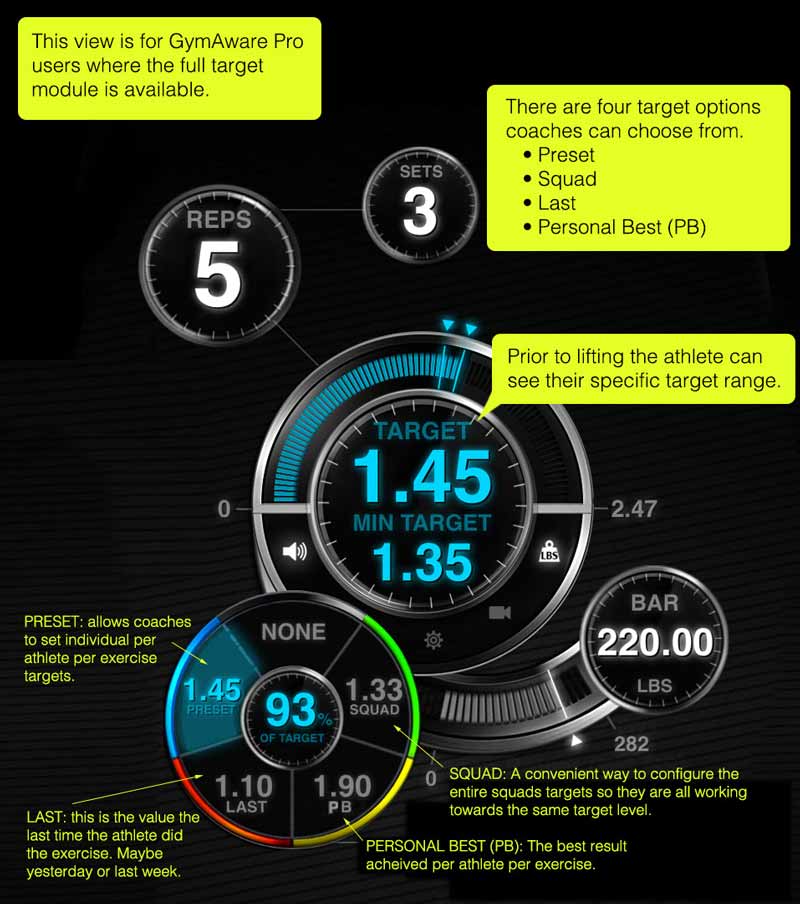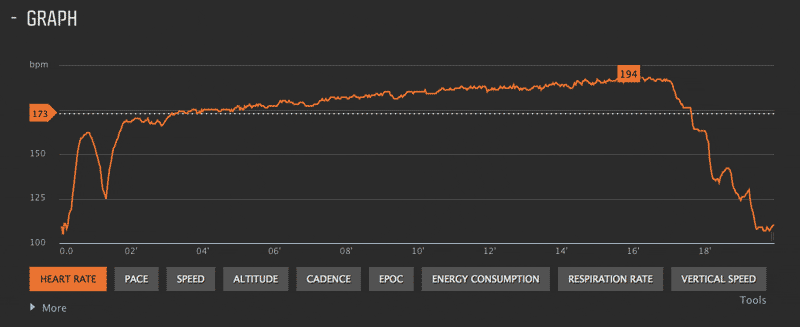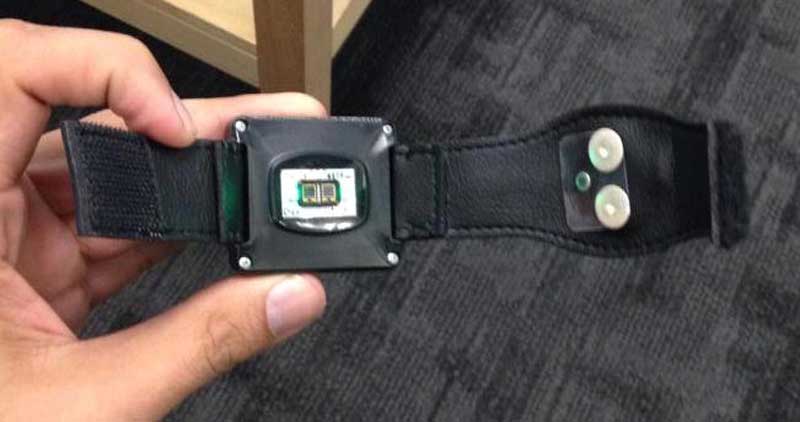
By Carl Valle
In this installment, the Freelap discussion has moved from unorganized social media exchanges to a great set of questions on training, monitoring, technology, recovery, and data science. The comments section is also available for exchanges and deeper understanding at the end of this article.

Question: Carl, what is the latest developments with Facial Coding? You posted an image from Haloview that was showing metrics similar to Subjective Indicators and it’s interesting. How can I add this to my team so I can get more data? How do you use it with your athletes you work with, especially during the off season?

Figure 1: Facial Coding uses video clips and very cutting edge software to look at mapped expressions to measure emotive scores. Overtraining and team chemistry can be analyzed conveniently with mobile phone platforms available today.
What Jose Fernandez does is very cutting edge and is always pushing the envelope. I work with a lot of athletes that may be with me for years. One athlete I worked with in high school, college, and now post college, so I have a good working relationship. Some athletes I use Facial Coding because they have big budgets and like to give back, but the decision to use Facial Coding is a big investment.
Facial Coding is an emerging sports science tool as we get technology growing. No team in the US or private facility is doing this in North America. Facial Coding is a serious extraction technique that captures data based on facial patterns in video. In addition to mood and other emotive responses, my friend Andrew shared on social media the power of getting HRV from the R-R intervals from the blood flow through the face. Software is growing and tools such as Facial Coding can make simple mobile platforms into serious tools for coaches.
Things can get complicated though, and I live minutes away from one company that is doing this with marketing analysis, and athletic performance is too small to cater service for most providers. Don’t bother going inbound and wait for third party products to develop, since this stuff is difficult to construct. For example how is the athlete getting information sent to him or her? An SMS text message asking how they feel is much different than a Facetime interaction with a coach who is responding to their facial and verbal exchange. Now teams have to interpret the interaction, not just a response. One season I just tracked smiles of one moody sprinter, and it was very obvious when she was peaking, as the grin during my bad jokes grew to a full smile when she set records and achieved All-American status. What I suggest is doing subjective indicators for mood and energy and leave the body charts for soreness. Facial Coding can be done in clever ways since video cameras are everywhere in facilities and stadiums, but used only for security. Pupillography is also a possibility since the autonomic nervous system can be evaluated with this option, but this is a few years away from being consumer friendly. Why not use athlete surveillance techniques to help with using the time and energy already invested instead of adding more testing?

Question: I was wondering about Athlete Management Systems like Apollo, Edge10, Smartabase, and others. They are not cheap by any means, and we are trying to get better organized with our data. We are integrating HRV and GPS data and wanting to get a better understanding of how they relate. You mentioned ROAMBI and other business tools as possible solutions, do you still suggest those.
Athlete Management Systems in general are dated, limited, and a waste of money. Yes, it feels good to see your data live with pretty charts and graphs, and the API integration makes it easier on coaches, but stay away from those options and focus your budget on better solutions. Several teams have gone to general tools such as Asana and Trello for better communication, but that is just a percentage of the need and the gap widens each year without investing into a real database and medical system. Dashboards are for little boys; platforms are for big boys. The difference is that the platform is about tools and resources to get the data or metrics to improve, and a dashboard just visualizes data. CoachMePlus is growing in popularity because they understand the need to get all of the data to feed into one central repository, and data warehousing is very important, but they have no analytic engine and own no proprietary algorithms….yet. They are moving to satisfy more range of clients and are constantly iterating and innovating, meaning the product becomes better constantly instead of waiting for feedback and they are on the right track. If they go to the Freemium direction, they can be a force, provided they create an ecosystem for third party people, otherwise it will die on the vine. I use my own AMS, and it’s extremely powerful, but it’s useless for others because the customization is based on what I do, something that will be ineffective for the NBA and is overkill for EPL or MLS.
The question of using apps and online software to get the job done with teams is a good idea, and I have annoyed a few vendors by not explaining why I want changes to business tools. I contacted ROAMBI years ago, but they are not doing much beyond interactive reporting. Tableau is a business tool for statistics mainly, and some charts are not ideal for sports performance and sports medicine, so I have decided to focus on custom charting. For example take a pressure map from gait analysis, and no stacked bar chart or bubble chart is going to help there. I can’t get into too much detail, but one company is releasing a dashboard with a custom design to showcase training data, and the chart doesn’t belong in any one category, and it’s easy to understand. We need less forcing of software because of lack of vision and more whiteboarding a wish list. My suggestion for software needs and teams is contacting a vendor and pay the cost for a system as it’s more powerful, extremely customized, and you don’t pay subscription costs or high fees upfront.

Question: Sparta Science is starting to become popular, and I wanted to know how to create something similar but without paying for force plates and the software costs. We wanted to get power testing involved more with our college team but don’t know what options exist besides what they are offering in California.

Figure 2: A better way than force plates is to look at training, not vertical jumps only, for better outcomes. Jump training, as well as the weight training itself, can be measured and by Velocity Based Training (VBT) methods with the right equipment and good program design.
Movement Signature is a marketing term and the metrics involved are not sensitive to guide training because vertical jump kinetics is not a crystal ball and teams thinking this is novel need a history lesson. Force Time charts of force plates can be done with other technologies, and one needs to step back and see the big picture. Don’t waste your time trying to replicate the Jump testing as the big issue is the data is limited, and it’s better to use the Bosco Tests with weight vests or Olympic bars to better see power changes and fatigue. I am embarrassed and frightened people are buying this. I like data and feel power testing is very important, but all training data is much better to look at. For example jump squats as a warm-up can get the same data as Sparta, but use time better by creating an elastic power training effect and is more team friendly because it’s seamlessly integrated to weight stations. Teams should add Velocity Based Training and read the work of Mladen Jovanovic and get a better understanding of the development process instead of sitting around a force plate and looking for cartoony bar charts to tell them what to do.
Second get athletes faster, and that means electronic timing. Yes, I am biased here, but the point besides mass and jumping is to get athletes faster right? How is the training getting athletes to run faster globally is the name of the game, since speed is a far more stubborn quality to improve than vertical jumping. I have improved vertical jumps and see no change to speed, but conversely, training for speed has shown up on an array of power tests later. At the elite levels athletes get slow quickly if they are not focused on speed, so at least tracking speed over a career is needed even if you want to maintain talent. Power and speed development are interrelated for team sport, and a focus on what Mladen is providing is more effective and a lot more practical with limited time.

Question: The blood analysis blog interested me to do more testing with my athletes, but like TJ I had questions about the validity and application of blood testing with athletes since it’s not practical and expensive. I am still confused on profiling athletes, especially muscle fiber and hormones.

Table 1: SaaS services like InsideTracker allow me to test any athlete remotely, such as a NBA athlete in California or a NFL player in Florida. Additional algorithms such as using physiological testing and monitoring can data mine more or convert raw scores into actionable tools such as Total Hemoglobin Mass, and an adjustment for plasma blood volume. The athlete above is a soccer player with a 36 inch vertical and 3.9 speed, making him at risk for fatigue and must be carefully monitored or injury risk is elevated.
One professional team in the US is trying to do this now, and they have added the genetics side, a very interesting direction we are going to. The “Vigo” algorithm is looking at Tensiomyography (TMG), biomarkers, and specific performance testing to profile a player. This is important because individualization is essential to reducing overload and more effective transfer of training. You can maximize genetics but don’t fight them!
TMG is a tool to help estimate Type I fiber, or the slower oxidative muscle. It is assumed the faster fiber type is the remainder, and that becomes the difficult part, estimating higher fiber types since more than two exist. It’s not fast twitch, but a spectrum of fiber types. Type IIX is higher in sprinters, and the goal is not to ruin team athletes by 4th quarter toughness marches or overdosing on prowler flu. The goal is to be at the highest end of power as possible, and that means low Type 1 levels and highest or of the charts androgen scores.
Hormonal profiling can range in biomarkers, but Total Testosterone, Free Testosterone, Sex Hormone Binding Globulin (SHBG), Albumin, CK, and Cortisol is a good start. Each biomarker has a role, and one example of this is Creatine Kinase, a marker of muscle damage that while not perfect, does hint to ensuring that markers are resting hormonal profiles, not scores in the middle of heavy training that are sometimes too difficult to adjust and interpret. The more explosive the athlete in jump and power testing and the less aerobic their sport, the higher their bioavailable androgens should be.
Every team needs to do a full panel of biomarkers and then do an array of performance tests. Bad Yo Yo IR2 score? Was it from poor hemoglobin scores because they are anemic or was it because they are weak and broken down? Slow as molasses? Bad androgen profile because cortisol is massively elevated perhaps? The three days before the test must be included in the formulas otherwise a false reading may skew analysis. Blood testing will get cheaper, faster, and require less blood with all of the technologies coming down the pipeline. I see first hand devices that will disrupt the lab, but blood testing isn’t a real need because we can do a great job now, it’s about analysis and interventions.
Blood Testing has some simple practices, and the first is a comprehensive screen done during the end of the offseason and the beginning of a preseason. Vitamin and mineral tests are a lot easier to interpret, but thinking that one needs to be higher than deficient and lower than toxic based on traditional ranges are too simplified, but a good start. More complicated but important biomarkers like testosterone need to be tested a few times a year to understand how the body is recovering from intense training. Total testosterone is grossly simplified to see anabolism, but if one is low chronically after rest phases, something is wrong. Coaches and sports scientists can argue about nocturnal measurements because some circadian factors exist, but biomarkers are wonderful in that they can interact with sensor technology such as GSR and other options like real-time HRV.
Exotic markers such as TNF-Alpha and urinary neurotransmitters are good micro experiments, but the first step is controlling blood glucose and watching for blood lipids. No athlete cares about blood lipids because performance doesn’t hang in the balance because of triglycerides, but a solid panel will indicate lifestyle habits such as Wendy’s being a fueling station too often.

Question: Your weight vest article mentioned something about coaches should focus on managing power instead of monitoring fatigue. Could you get into more detail about this train of thought? I am having a hard time grasping the concept without examples of what you mean.
You are not the only one commenting on that. Monitoring athletes is interesting and valuable, but do you want a security guard that watches a TV and does nothing but send a report or one that uses one to act appropriately during a break in? I choose the latter. The issue with monitoring is that without action it’s just more reports of what we all know, the problem at hand. Sometimes monitoring can help illustrate the problem but the reality is training data trumps monitoring nearly every time. Good training records tell the story of what happened, and I have mentioned this countless times because some viewing Omegawave data thinking they are observing adaptation, but their training programs should be written in crayon to match their ability to write programs.
Managing power is about selecting the right options to get athletes better or to overcome limitations of competition schedules. So the absence of power is normal and expected because of fatigue, but one needs to study ideal options to create a relative comparison. The first thing people do when seeing fatigue is get frightened, thinking if they don’t toss their athlete in a sauna or do a walk in the woods they will tear an ACL the next day. I like Dave Tenney’s mindset of looking at healthy players first, but models need to think about athlete profiling genetically so the direction is right. When good profiling is completed, then a coach understands the athlete’s abilities and adaptive characteristics. I have one athlete who can’t handle aerobic work well as he is very blessed with type II fiber, but the issue is not training his strengths and putting one’s head in the sand, but being creative with very precise options to allow the aerobic system to improve and work in harmony with one’s gifts. How many teams look at conditioning tests and foot structure? Elastic energy is something I teach all team athletes so they can run faster and farther using running economy development. I want better conditioning capacity, not just physiology changes.
Focus on getting athletes better through sports science, experimentation, and motivation. The mind is very powerful, and one coach told me if you start telling ghost stories you, of course, would be afraid of the dark and see the bogeyman. Fatigue is real but the body can adapt if you focus on getting better and not being spooked by new data as we have more and more of it that represents fatigue. Fatigue is a friend if it’s not an overdose, and look at ways to create a perfect dose instead of avoiding training.

Question: In the Kinetics Manual you mentioned that Tempo training has a parasympathetic response to power athletes, and you listed some good workouts. What do you think happens now with aerobic work after attending the Windsprint Seminar on physiological adaptations to sprint training? Can you elaborate on active recovery?

Figure 3: The Yo Yo IR2 test shown with heart rate data, is a great indicator of fitness, but several workouts and tests provide a complete view of conditioning. Active recovery helps with recovery from training programs so think about blocks, versus sessions. A pool workout that is active is far different than low-intensity running because of mechanical strain on the body still being a factor.
As a clarification, active recovery doesn’t improve much acutely, and some research shows it actually decreases functional status. The issue with the research is that they always look at a microscope view without seeing an entire season. Don’t blame science but look at the big picture with capacity over weeks versus feeling fresh for the next session. Tempo running does create an investment with adaptations that can help and athlete supercompensate and cope with heavy and intense training. A running workout will not regenerate anything, but the fitness in the long run will help with chronic loading. Shifts to better anabolism can be seen only in long seasonal patterns and will not be visible until after months of training have set in.
Passive rest is perhaps underrated for athletes, and the adage “it takes guts to rest” fits right here. Detraining, a topic presented in detail by Inigo Mujika in Boston this year, and the art of maintaining just enough of the right areas is a compromise coaches have to juggle. The process is similar to agreeing on a restaurant and movie on a date. The trick is to find ways that don’t interfere with midrange development so that the sport form is improving, but not losing capacity. Eventually, one has to simply give up further development and reap was planted by tapering or focusing on a shallow stimulation rather than deeper adaptive workouts. A book titled “Die Broke” hits the concept on the head that you want to peak when it counts without leaving the right elements tapped out at precisely the right time.

Question: I read the questions you responded to on SpeedEndurance about regeneration and recovery, and I am confused why you suggest some techniques but mock the use of EMS and lasers now. You also shared some specific comparison charts about Game Ready and Normatec during the speaking engagement in Milan this summer. I would like to know what you do outside the common ice bath protocols and massage suggestions we see today.
Electrical Muscle Stimulation has some value on hypertonia and maybe that helps with managing pain, but the physiological requirements to repair are not showing up in the research. Lasers may help as well, but not much is shown that will be a game changer. Cold lasers are very expensive, and the Erchonia isn’t going to do much besides give a placebo effect. Game Ready and Normatec? So that the reader is aware Game Ready uses cryotherapy to help manage injury and might be useful for rehabilitation, but Normatec is extremely useful for lymphatic circulation with lymphedema patients, but I have yet to see how exactly it works with athletes but feel it’s a practical option for teams. Dr. Bill Sands who was with the USOC Recovery Center did some great studies, but he made some major mistakes interpreting the findings. Dr. Sands looked at Pain-to-Pressure changes after sessions and flexibility improvements post application. I am not arguing the results of he found, but his summary and conclusion was shaky at best. Examples:
- Thixotropic changes to biological tissue have essentially minutes for a half-life and don’t provide any tissue recovery benefits. I am not sure why Dr. Sands brings up a biological change that is so temporary.
- Flexibility changes from using intermittent pneumatic compression are nice side benefits, but comparing to a control (nothing) is a lousy set-up or design. Why not compare Normatec and a range of motion series of say 10-15 minutes? Flexibility is fleeting as well, and what are the results 2 hours later?
- Cortisol rises after immediate use of compression therapy, but that is followed by a strong parasympathetic change hours later if combined with other therapies. I have seen positive hormonal changes and less inflammation biomarkers, but it’s likely that some opiate response is created from the device. Endorphin responses exist because of the pressure and blood flow and lymph flow makes it a good passive option.
Ice Baths, cryosaunas, cold showers, all have value, but they should be used for managing pain and deep fatigue. Ice is great for pain and some experience a change in neurotransmitters, but don’t expect changes that will be miraculous. Martin Buchheit’s research showed heavy training can respond to “Spa” treatments, provided that the application is long enough, and the load creates a fatigue that would respond to such an application. Consultants call this RPI or rebound parasympathetic index, a measure of recovery techniques to the daily HRV score.

Question: Can I get an update on wearable devices, specifically watches and smart fabric? You have been on the fence for years regarding anything technology worn on athletes and seem to have a lot of interesting ideas and strong criticisms. What is the hot product and what is going to be DOA?
A few years ago in 2010 I showed wearable sEMG shorts at workshop in Houston and explained that professional teams better be ready. Now a company in California (Athos) is doing the same thing but not learning from Myontec, a company in Finland. I emailed Athos in 2013 for a team order for pro teams since most products are not good for big bodies. Putting a seven footer in a Bod Pod is like stuffing 10 clowns in a VW beetle, entertaining for the rest of us but annoying for those involved. Start-ups are disrupting professional teams since inexpensive consumer products are allowing regular Joes to get near lab like data.

Figure 4: Wearable sensors are growing in popularity and shrinking in size, but the data is exploding in volume and decreasing in clarity. To fully benefit from the evolution of technology think about timeless problems that have not be solved in the past instead of looking for cool metrics and sexy algorithms. Athletes need behavior changes and the best way to handle this is measuring outside the box metrics like laziness and dishonesty with pain. GSR is now integrating with Facial Coding and we will see used in the future.
The truth is that most companies that are funded by investors could care less about professional teams except having them on the testimonial pages for PR, and having 1% of 1% is not a good revenue stream. One wearable device company is promoting a product for measuring power and their CEO mentioned wearing it for leg extension power, showing that no matter how great the Kickstarter video is, the visions of companies usually are looking for money rather than elite athlete results. Making sure Mandy and her Zumba class is toning with her Hi Tech Lulu Lemon pants is not the same as a lab screening for dysfunction with motion capture and sEMG. It takes very serious software and precise anatomical placement. For example, the posterior thigh has three hamstrings, and each one has similar and specific roles, can software filter out fatigue during a scrimmage? I struggle with PHDs who spend all day getting this information on the treadmill walking, and teams are supposed to use this with 20 athletes? It’s like finding a needle in a haystack but worse because you are doing it blind without very high definition video and motion capture technology.
GPS faces the same problem with player’s work load. I will say this one more time, without in shoe pressure mapping and biomechanical evaluation, GPS is simply a volume and distribution tool, and that’s it. Velocity bands are limited, and they didn’t work for the Dallas Cowboys. Apparently they, the team was blamed for not using their software properly but isn’t that the point of good technology design? Great tools and technology should help remove burdens and not add more to a coach’s plate right?
Teams wake up with athletes getting shot at clubs, pulled over for drinking, and have to watch on YouTube athletes eating at Wendy’s after training. What should be the focus of monitoring is lifestyle, not what’s on the field when countless eyes and cameras are doing that already. The problem is athletes feel like prisoners or being spied on and data is going to be hard to collect.

Question: You spend a lot of time evaluating performance shoes and cleats, can you get into more detail how you calculate and score boots for futbol and spikes for track? What about orthotics and barefoot training as well as the need to rotate surfaces and foot attire like you mentioned in your manual?
This stuff is hard, time-consuming, and simply very complicated to do with teams, and I don’t provide that to anyone since it’s exhausting. Many shoe designers, such as the one interviewed this spring, are trying to sell shoes that sell and hopefully perform. When evaluated in the lab, athletic shoes never seem to meet the expectations of their marketing materials, and sometimes they hurt athletes. One example of this is carbon spines in some basketball shoes. While a spike plate may want stiffness for performance, something has to give with the body with those artificial changes and it’s usually a joint system with basketball because of their game schedule density.
Finding a podiatrist that is rooted in biomechanics and good anatomy is rare. I use three different podiatrists, and they are on three separate continents. Mat and In-Shoe pressure analysis, highly specific foot scoring, and functional evaluation is required. Then we have to see how the shoes, all of them, integrate with the objective scoring. Sometimes orthotics help, sometimes they cause problems, most are just created from casting of the foot by looking at structure or walking tests at best. The solution is to perform athletic motions and do damage control. Don’t expect the device to do much but damage control.
Barefoot training is hype, and if anyone thinks that shoes are evil ask an NBA player to compete barefooted. Sure you can do some exercises and make very small changes, but by the time the problem surfaces in one’s twenties it’s too late from deformity and hard tissue changes. Proprioception is neuromuscular in nature, not structural. A healthy dose of moderation is essential here, but you can’t get online attention suggesting balance or similar, it must be extreme.
Evaluating shoes isn’t hard but I suggest working with experts who work with pressure mapping and gait analysis with powerful tools and understand biomaterial regeneration and remodeling. Then see how the shoe performs or hampers function and do your best to modify or communicate with the manufacturers. Most designers are great artists, and most engineers are great evaluators, they need to be on the same page or will see more D- Rose problems.
Please share this article so others may benefit.
[mashshare]If you're interested in latest on athlete monitoring, tracking, or geek out on tech, good interview at @FreelapUSA http://t.co/NArkuxami6
— Steve Magness (@stevemagness) August 15, 2014
@stevemagness @freelapusa Facial coding could also be a boon to parents of teenagers worldwide!
— David Tilbury-Davis (@TilburyDavis) August 15, 2014
9 Questions and Answer in Sports Performance [that will make you a better coach/sport scientist] http://t.co/e9kR0HL1rx via @FreelapUSA
— Jorge Carvajal (@carvperformance) August 15, 2014
Carl providing some insightful reading here: http://t.co/tlstX5AgDM It has sparked the need for me to rant, and be real with people.
— RandyB,ATC (@randybatc) August 15, 2014
Facial coding to measure emotive scores, plus other technologies for athlete monitoring: http://t.co/Uz2CtA1HS7
— Anna Saw (@annaesaw) August 16, 2014



The freestyle glucose meter is now the freestyle libre flash glucose monitoring system but Freestyle has several different types of test strips. The freestyle blood glucose meter uses the Optium Electrodes, while FreeStyle also makes the Precision Plus, TrueSense, Sof-Tact, FreeStyle Lite, Optimum Omega and FreeStyle Papillion Mini electrodes. You can use the Optium Electrodes in your Optium Exceed meter but not any of the other Freestyle test strips. If your insurance doesn’t cover test strips then your best bet is the Walmart Relion meter as the strips are a lot less expensive.